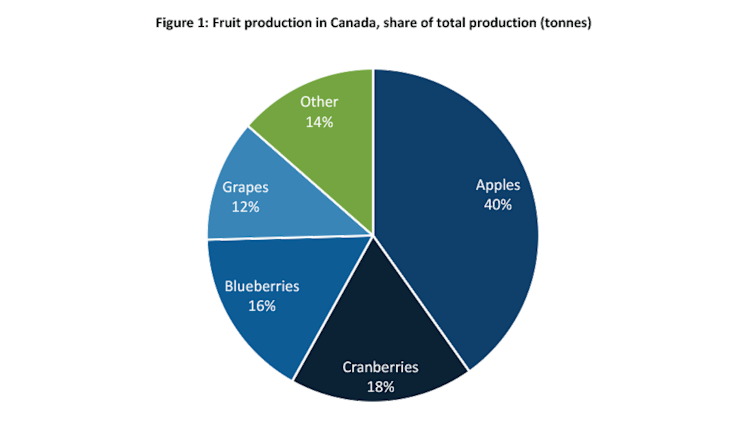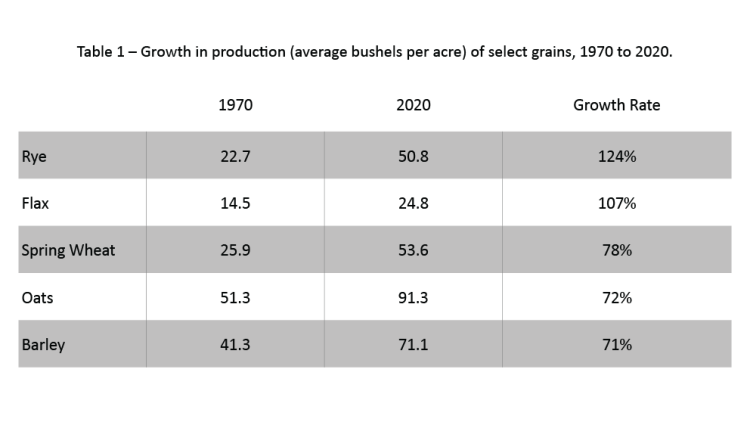FCC’s great Canadian breakfast

Good morning, and welcome to FCC’s Great Canadian Breakfast. For how many? Booth or table? Do you folks need a kid’s menu? Ok, perfect, follow me.
My name is Graeme, and I’ll be your host today. To celebrate Canada Day and Food Day Canada on July 30, we’ve got a special breakfast menu with most items sourced from Canada’s diverse agriculture sector. If you look at the menu below, you’ll notice fun facts associated with each item highlighting something worth celebrating about Canada’s food production system and its contribution to our economy.
Can I start you with drinks?
Coffee
Let’s begin with something Canada doesn’t grow – coffee beans. While we may not grow beans, we import, roast, and package them. And we Canadians love our coffee: 71% of us will have at least one coffee today – and the average Canadian will drink 2.7 cups of it.
Juice
We import a large proportion of the juice consumed in Canada. Orange juice, for example, is twice as popular as apple juice – despite the fact we do not grow oranges. Vegetable juices are a small but growing subsector in the wider Canadian juice market as consumers shift away from juices with higher sugar content. According to IBISWorld, vegetable juices are expected to account for 3.2% of industry revenue in 2021, up from 2.8% in 2016.
Milk
While Canada may not grow any coffee beans or oranges, we produce most of the milk consumed. Canadian dairy farmers produced 27.6 million hl of fluid milk in 2020 – enough to fill 1,100 Olympic-sized swimming pools.
Appetizers
Before tucking into your main course, allow us to serve you something on the lighter side.
Oatmeal
It may not be winter, but oatmeal is a classic dish guaranteed to hit the spot. Canada is the number one exporter of oats in the world – and by a good margin. Even with the drought in the Prairies last year, Canada exported more than twice as many oats (1.3 million MT) as the next largest exporter (Australia, at 0.6 million MT).
Yogurt
According to Nielsen data, Canadians spent $1.7 billion on yogurt in 2021 and another $38 million on frozen yogurt. Would you care to contribute to the 2022 total sales figure?
Fruit bowl
We also offer a wide selection of delicious fruit bowls. Canada produces at least 14 different kinds of fruit, although the market is dominated by four types: apples, cranberries, blueberries, and grapes (see Figure 1). The fruit sector generated over $1.2 billion in revenue in 2021.

Source: Statistics Canada Table 32-10-0053-01
Main course
Steak and eggs
How about a AAA sirloin steak to start the main course off? Better get one before our trading partners do. In 2021, Canada exported nearly 43 million kgs of beef loin cuts worth $622 million. Most of these exports went to the United States (83%), but 18 other countries, including Japan, Australia and the Philippines, were eager to import these prized cuts.
We suggest pairing your steak with some Canadian eggs. There are plenty available. In 2021, 34 million layers produced 10.2 billion eggs and Canadians consume an average of 240 eggs per year. We don’t suggest filling your annual fill by serving you 240 eggs this morning. How about starting with two?
Sausage
Making sausage is an art. It takes the right mix of meat, vegetables and spices. And according to Nielsen’s data, sales of sausages peak in the middle of the summer. Whether you prefer beef, pork or even poultry sausage, we have what you want. In terms of cash receipts in 2021, cattle is the largest livestock sector at $9.2 billion, hog is third at $6.2 billion and chicken is fourth at $3.3 billion.
Bacon
The breakfast king from the belly of the hog. Consumers love it so much that it competes with the ribs as the most valuable cut of a hog carcass.
Hashbrowns
Potatoes are the highest valued vegetable crop in Canada. In 2020, Canada produced 4.7 million tonnes of potatoes. Two-thirds of our potatoes are processed into things like hashbrowns and French fries. But it’s breakfast, not lunch, so we suggest saving your French fry order for later today.
Pancakes
Take a little flour, some eggs, some milk, some butter, and you’ve got a great combination of Canadian ingredients to make the perfect pancake. Canada milled 2.4 million tonnes of wheat flour in 2021 – more than enough for us to cook you a large stack.
We suggest topping those pancakes off with some maple syrup. Is there any breakfast item more Canadian than maple syrup? Canadian maple syrup has global brand recognition and is an export success, with export sales by volume growing 83% between 2011 and 2020.
Toast
Over the last 50 years, the agriculture industry has gotten much more efficient at producing grains commonly used in bread (see Table 1). In a world with a growing population and increased food insecurity, this has — and will continue to be — of great importance.

Source: Statistics Canada Table 32-10-0359-01
Thanks for dining with us at FCC’s Great Canadian Breakfast. We know prices have been rising, but like everyone else, we’re trying our best to keep prices low. Visit us again soon.
Graeme Crosbie
Senior Economist
Graeme Crosbie is a Senior Economist at FCC. He focuses on macroeconomic analysis and insights, as well as monitoring and analyzing trends within the dairy and poultry sectors. With his expertise and experience in model development, he generates forecasts of the wider agriculture operating environment, helping FCC customers and staff monitor risks and identify opportunities.
Graeme has been at FCC since 2013, spending time in marketing and risk management before joining the economics team in 2021. He holds a master of science in financial economics from Cardiff University and is a CFA charter holder.
